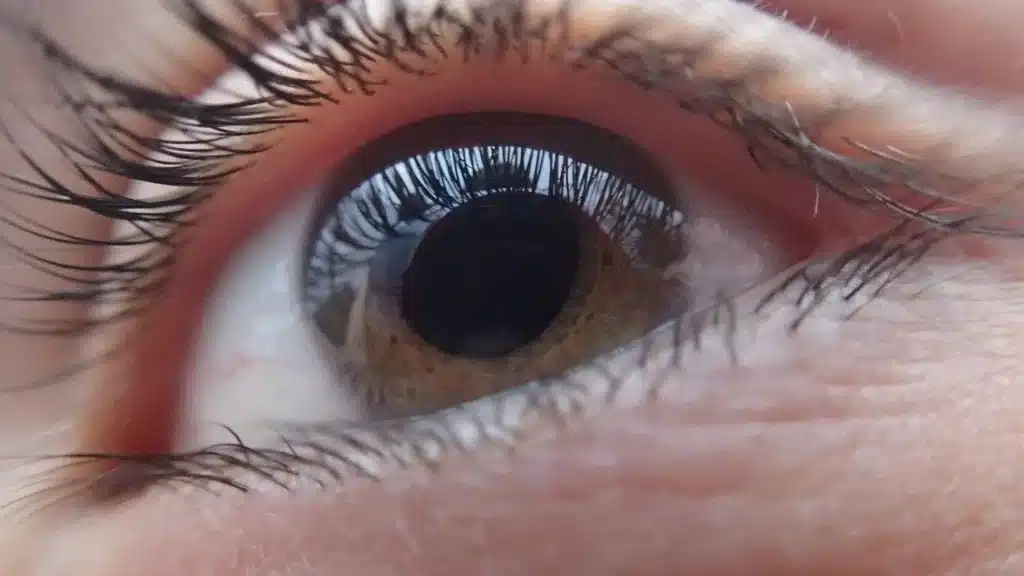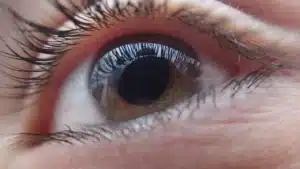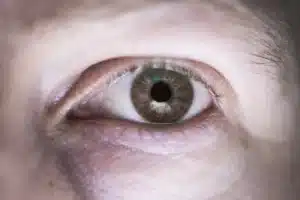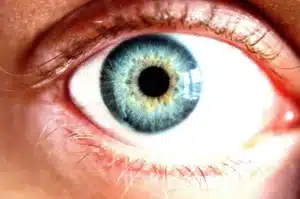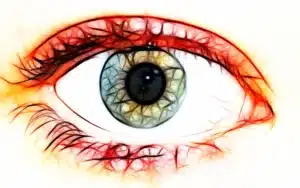The cornea is the front surface of the eye that plays an important role in the overall health and function of the eye. The two most important functions of the cornea are protecting the eye from germs, dust, and debris, and acting as the outermost lens to help bend and refract light.
In fact, the cornea is responsible for nearly 70% of the eye’s total focusing power as light finds its way to the back of the eye – the retina. There, the light is converted into an electrical signal that travels through the optic nerve up to the brain, where it’s then converted into an image.
As important as the cornea is, it’s not perfect. Numerous eye conditions affect the cornea’s function and appearance, which can diminish a person’s vision, confidence, or quality of life. The good news is there are ways to correct corneal abnormalities – as well as traumatic iris loss.
So, what is corneal tattooing?
Corneal tattooing is a procedure performed by an ophthalmologist that either improves the cosmetic appearance of the eye or helps block incoming light from going somewhere it shouldn’t be. This is done when certain iris or corneal abnormalities impact the look or function of the eye.
The procedure has been performed for over 100 years, but advancements in technology have changed the way surgeons perform it. Today, most surgeons utilize a femtosecond laser, a manual tool, and ink to correct any abnormalities of the iris or cornea. It’s a quick procedure.
The femtosecond laser creates a channel around the iris. The surgeon uses the manual tool to create a pocket in the cornea. Another manual tool is dipped in a special ink – which matches the color of the patient’s iris – and the ink is inserted into the pocket to cover up the issue.
Corneal Tattooing vs. Eye Tattooing
Corneal tattooing shouldn’t be confused with eyeball tattooing. With corneal tattooing, the surgeon is correcting problems with the iris or cornea. The goal is to either make the patient feel more confident in their appearance or to improve the patient’s vision due to symptomatic glare.
Eyeball tattooing, on the other hand, isn’t performed by an eye doctor or eye surgeon. Instead, it’s performed by a regular tattoo artist and is purely done for the individual’s entertainment. It changes the way the eye looks – for example, some people change the entire color of their eye.
Corneal tattooing is a necessary and useful procedure that helps treat real eye conditions. Eyeball tattooing is a likely dangerous procedure that could lead to a number of risks and complications – including vision changes, infections, and even permanent vision loss.
When Is Corneal Tattooing Used?
There are numerous reasons why your eye surgeon might recommend corneal tattooing, also known as keratopigmentation (KTP). Some of the most common reasons are disfiguring corneal scars, corneal opacity, leukomas, aniridia, eye injury, treating iris defects, polycoria, iridodialysis, and much more.
In terms of iris defects, there are three main causes that could result in the need for a corneal tattoo – eye trauma, cataract surgery, and peripheral iridotomy. Many patients experience glare or diplopia caused by laser peripheral iridotomies and intractable binocular diplopia.
Different Techniques for Corneal Tattooing
There are a number of techniques for corneal tattooing that have been used over the years. Some are more popular than others, but using a femtosecond laser has become a leading option among eye surgeons today. With that said, let’s look at some of these techniques:
- Staining Method – applying the ink directly to the corneal surface. It’s a relatively quick procedure but is prone to fading over time.
- Impregnation Method – applying the ink directly into the corneal tissue with the use of a tattooing needle. It’s more permanent than staining, but mistakes are more common.
- Lamellar Keratoplasty Technique – a scleral, limbal or corneal lamellar incision is made and ink is inserted. It results in greater pigment density.
- Femto-Assisted Corneal Tattooing (FACT) – a pocket is made using a femtosecond laser, which is where the pigment is inserted. Results last longer and are more uniform.
Over the years, surgeons have used a number of different inks or pigments to perform corneal tattooing. Today, the most common type of ink used is micronized mineral pigment. It helps achieve that quality cosmetic appearance while preventing an inflammatory response.
Are There Any Complications of Corneal Tattooing?
As technology continues to improve and surgeons grow more skilled at the corneal tattooing procedure, the likelihood of complications arising decreases. With that said, there are several risks and complications that come with the procedure – much like any other eye procedure.
The most common complications include light sensitivity, color fading, neovascularization, infection, inflammation, and pain – though these complications are rare.
When Should You See an Eye Doctor?
Corneal tattooing can be a very useful procedure for the right patient. For example, your eye doctor might recommend it if you have a corneal scar, a hole in the cornea that shouldn’t be there, or a glare in your vision. Like anything else, they won’t recommend it if it isn’t necessary.
Not only that, but corneal tattooing can help those that have an eye defect that changes the appearance of the eye. With corneal tattooing, the defect can be hidden and the eye will go back to looking like a normal eye. This is true for blind people with gray, cloudy eyes.
Contact Milwaukee Eye Surgeons Today!
At Milwaukee Eye Surgeons, we take great pride in serving the Milwaukee community with best-in-class eye care services. Your eye health means the world to us and we’re prepared to use our knowledge, skill, passion, and technique to help you gain confidence with your vision.
If you’d like to learn more about corneal tattooing or believe you might be a good candidate for corneal tattooing, contact our office today. One of our proven ophthalmologists will perform an eye exam and analyze your current eye health. With us by your side, your vision is in good hands.
Contact us today to schedule your next eye exam!

